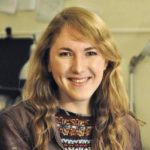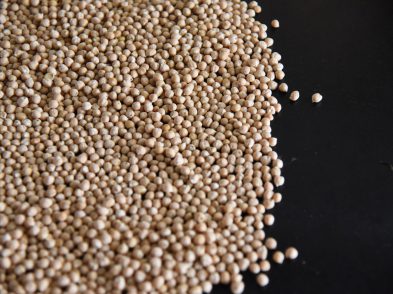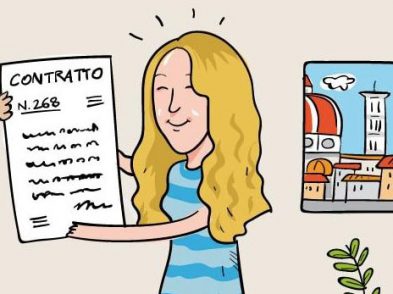In the aftermath of a Linkiesta article that detailed behind-the-curtain contractual issues for participating artists in Palazzo Strozzi’s blockbuster exhibition Marina Abramović. The Cleaner—a September 6 story that prompted Fondazione Palazzo Strozzi’s director Arturo Galansino to respond candidly in an Exibart exclusive the next day—a query posted in an online forum caught my colleague’s eye.
The forum was Couchsurfing, a community connecting travelers with local hosts offering no- or low-cost accommodation in cities around the world. Active Verona host MICHELEF wrote on a “Local Advice” message board for Florence, “A very good friend of mine is searching for a cheap room. She is an amazing performer artist (sic) going to collaborate with Marina Abramović…The pay is not so high, so she is searching for a friendly renting rate, {lower than} the market prices.”
Only one public reply was posted—tellingly, from a user in Pontassieve, around 20 minutes from Florence by train: “How far is she willing to be from the town center?”
“For art, but not for artists”
Logging into a long-dormant account and exchanging a few messages with MICHELEF, I was unable to reach his artist friend for comment, but found her predicament reflective of a larger pattern. In TF music editor Michelle Davis’ profile of band Redtree Groove published just last month, the young rock musicians called their hometown of Florence “a city made for art, but not for artists.”
“Not for ‘non-A-list artists’” is the subtext of the duo’s description if one looks at the lineup of giants who have recently exhibited in the Renaissance capital. As the names grow glossier by the year—Jeff Koons, Jan Fabre, Ai Weiwei, and now Abramović, among others—the local community of contemporary artists churns along against a challenging backdrop, seeking creative inspiration on the home front while applying for far-flung residencies and launching crowdfunding campaigns to take their projects abroad.
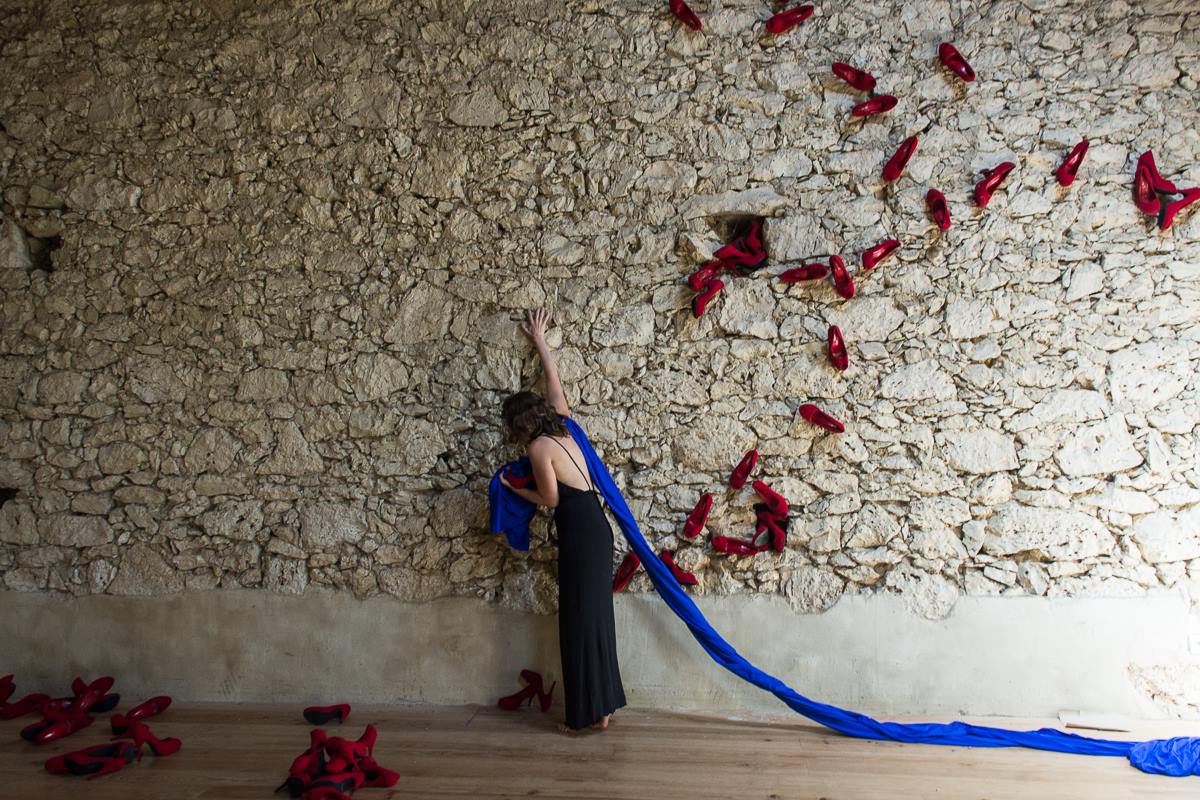
Obstacles to professional development and public exhibition appear especially pronounced for performance artists (ones who aren’t, say, Abramović), who work in a genre that is by nature at odds with the nuts and bolts of institutional bureaucracy. To wit, one definition of performance in the Tullio De Mauro Italian dictionary reads: “An artistic form dating to the 1970s with aims of aesthetic desecration and social protest, based on artist improvisation and audience involvement.” (Suffice it to say, not the art form that has the easiest time swimming through channel after administrative channel).
For local performers, the very beauty of Florence—or as resident Marisa Garreffa suggested, its “strong elegance”—can blunt their medium somewhat. Garreffa, an Australian writer and performance artist whose style draws frequently from her experience as a sexual assault survivor, claims that even Florence’s contemporary-minded spaces tend to keep programming refined, measured: “Performance art may be seen as too risky, political, wild, unpredictable and even, at times, too ugly,” she says. While Garreffa believes it is important “to show respect, appreciation and celebration” for the historic fabric of the city, she also sees a need for “genuine investment in the next generation of artists.”
Emerging talent at local academic institutions is arguably well-supported, with a proliferation of exhibition spaces (Studio Arts College International’s Jules Maidoff Gallery, or the SRISA Gallery in via San Gallo) and participatory platforms (the University of Florence’s architecture department holds the performance-heavy event series Nel Chiostro delle Geometrie, while Palazzo Strozzi has an ongoing, inter-institutional collaboration in which students at the Istituto Europeo di Design are afforded curatorial opportunities). Overlooked performers are the ones working on a wobbling plank somewhere above the student level, not yet at the apex of their careers. On this, multimedia artist and longtime Florence resident Justin Randolph Thompson echoes Garreffa: “There’s…much focus on getting blue-chip artists in the city in major and often dramatically costly exhibitions,” he says. Such a strategy “does somewhat work in putting Florence on the international map regarding contemporary art…but does little to sustain the creatives living and working within the city, who have a stronger {chance of impacting} the community and urban landscape in which they live.”
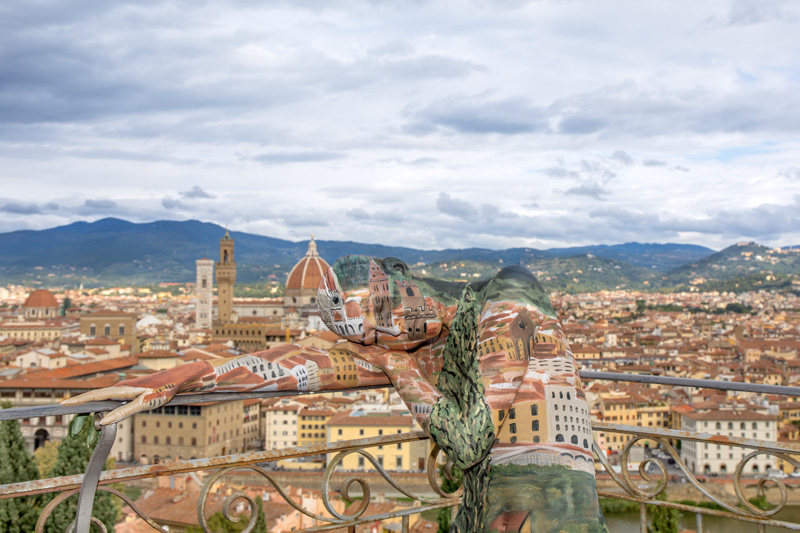
That’s not to say that exhibiting in Florence is a walk in the park for all well-established, visiting performance artists. Exactly two years ago this month, acclaimed American body painter Trina Merry, who studied under Abramović, had a brief two-week residency at Il Palmerino, a 15th-century villa near Fiesole. Merry’s site-specific work, in which nude human bodies are painted camouflage-style, the scenery spilling onto their flesh, has the sort of aesthetic pull that by all counts should have had an easier time gaining institutional traction, considering its reliance, and indeed capitalization, on Florence’s most recognizable treasures and landscapes. (Merry’s work is also objectively beautiful, and in many cases reminiscent of the great Renaissance nudes).
Il Palmerino, Merry wrote in an email exchange with TF, was “incredibly supportive,” but faced some resistance from other unnamed cultural hubs as its management assisted Merry in securing performances. Merry ultimately pulled off two installations and a live painting session at Villa Bardini, where she said audiences “really connected with it,” with some members watching the live painting process from start to finish.
The culture of each place Merry visits presents its own special set of limitations, she notes, but “saying yes” is her straightforward take on what Florence’s private and public institutions could do to make the city more welcoming for performance artists in all stages of their careers (Merry, for one, has done installations from San Francisco to Stonehenge to the Pyramids of Giza). Acknowledging that “yesses” often must pass through a series of hierarchies, she encourages “creating systems for accepting proposals, and having curators looking to bring in specific performance artists that are ‘on brand’ for that institution,” she says. “{In New York City}, it’s pretty standard to have live art or performance art at galleries on special days. Building in some of this programming could be a useful starting place for institutions wanting to bring in performance artists.”
Curiously, interdisciplinary programming at prominent Florence institutions, often held after-hours, is not lacking, nor was it in 2016 during Merry’s tenure here; space allotted within that programming for feather-ruffling performance art is what’s limited. Notable recent exceptions include Vanessa Beecroft’s nighttime Respiro delle Statue installation at Palazzo Strozzi, held during the tenth edition of the Firenze Suona Contemporanea festival in 2017, and the well-attended Uffizi Live summer series, which closed its third season in September 2018.
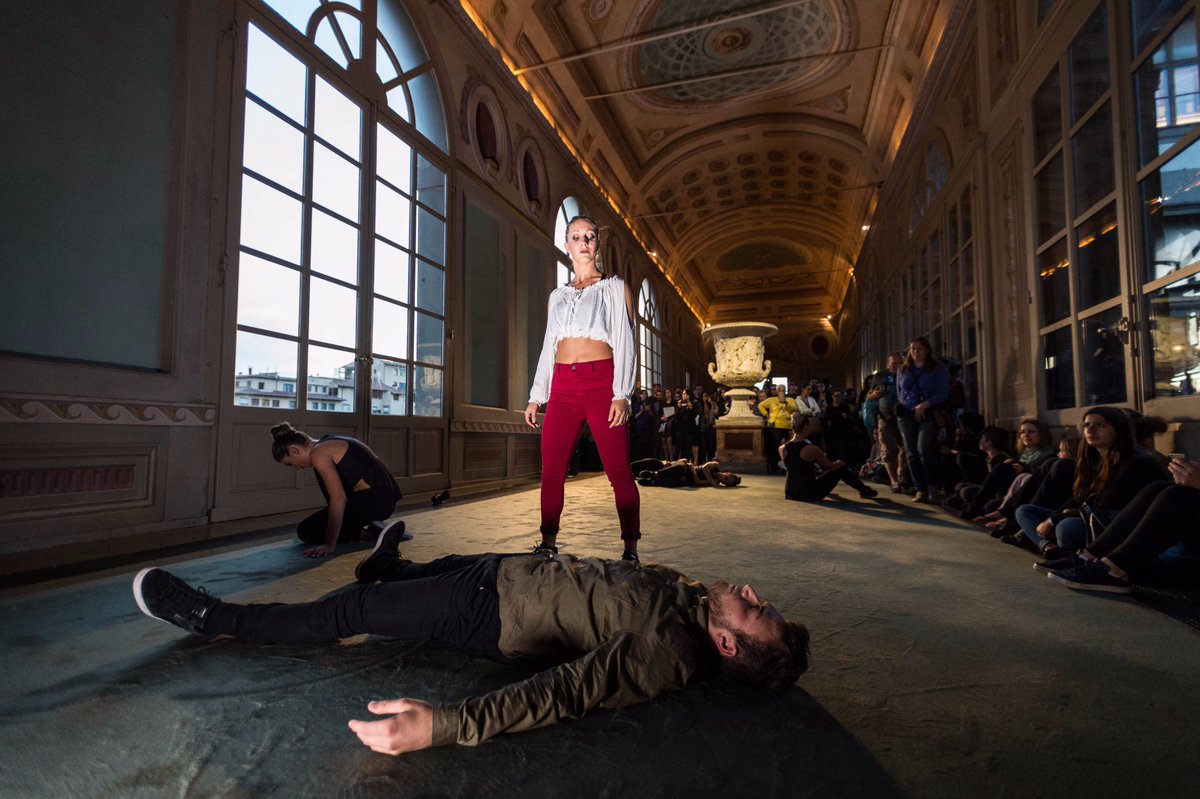
The latter is aimed at creating dialogue between contemporary performances and the Uffizi’s masterpieces (popular this year, for example, was Amalia Franco’s A flower is not a flower, a dance-body art performance dedicated to Caravaggio’s Medusa). A whopping 550 project proposals arrived for a mere 15 slots; in response to the inundation of submissions, the Uffizi Galleries, Palazzo Pitti and the Boboli Gardens are slated to host a yearlong rotation of special performances beginning in 2019, according to the summer festival’s 2018 press release.
It bears noting that, while the Uffizi’s director Eike Schmidt cited the museum’s “task to protect art in all its expressions,” the Live project was born—justly enough—as a dialogue. The contemporary is called upon to help reel in new audiences and bolster the appeal of the permanent collection’s patrimony, and not necessarily to privilege performance art as an end in itself. (Frustration with the treatment of the genre as cake-icing for more traditional art forms is nothing new. Roselee Goldberg, curator-founder of New York-based performance art biennial Performa, and author of the landmark 1979 book Performance Art: From Futurism to the Present, framed her own fatigue as the impetus for launching Performa: “I really was tired of performance always being presented as a sideshow,” she told Sleek magazine).
Too, it’s unclear how many of the rotating acts in the Uffizi and Pitti-anchored performances will be artists plucked from the creative community that Garreffa and Thompson feel is neglected. (Another factor that could complicate the project’s fate: Schmidt, who’s led the Live initiative and the broader Uffizi shakeup since his appointment in 2015, will leave Florence for the Kunsthistorisches Museum in Vienna by the end of 2019).
And so Florence’s performance art community may soon take its own steps to shift the tide. Garreffa, for one, is recently re-energized after returning from a (partially crowdfunded) stint at the 18th Asian Art Biennial in Bangladesh, followed by time in Hong Kong spent leading workshops: “I would love to take part in building a performance art festival here, activating more spaces, creating more opportunities to do what we love right here in this incredible city,” she says, clarifying, “It’s wonderful to have really successful performance artists here on show from the contemporary world. But let’s add some fertile earth in which less famous, but very brilliant and visionary, contemporary artists can take risks, explore, experiment, and present their craft to the public as well.”
And, ideally, afford a room at the market rate.

